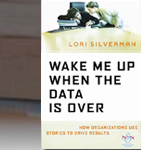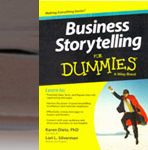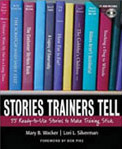In my December 2013 interview with Emma Murphy of The Change Source, I was able to weave new information and client examples not found in Chapter 16 of Business Storytelling for Dummies into my responses to her questions:
- What’s causing more and more organizations to embrace storytelling within their change communications?
- How can we get to know key stakeholders better through stories?
- How can we use storytelling to influence and motivate employees when trying to implement change?
- What should we consider when communicating our vision for change?
- Tell us what you mean by creating a “change is possible” story.
- Once we start to implement the change how can we capitalize on stories about people who are already embodying the change?
- Give us some tips on how to structure the stories we share.
Highlighted in this podcast is content on …
- How story moves a conversation from sense-making to meaning-making.
- Why pull approaches (story prompts, for example) are as critical as push approaches to story.
- How to construct story prompts.
- How to heighten pain and urgency in stakeholders early on through future story.
- When to use “ain’t it awful” stories.
- How both dream stories and future stories can be used to communicate the vision of a change and outline the buckets of work that need to be done to make the change a reality.
- A type of story a leader can tell to get employees off the fence to embrace a change.
Where else can storytelling approaches be used in a change effort? Tell me about an experience you’ve had where story has made a key difference in a change. Alternatively, tell me about a change where story wasn’t used but you believe it could have made a big difference in the initiative.








